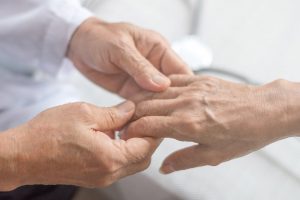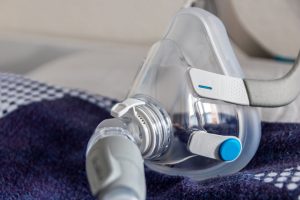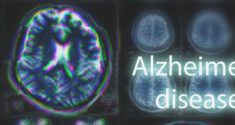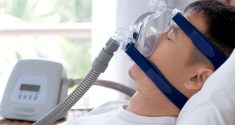New findings suggest that people who do not seek treatment for obstructive sleep apnea have a higher risk of developing Parkinson’s disease. The use of continuous positive airway pressure (CPAP) can reduce this risk by improving sleep quality and maintaining a constant airflow throughout the night. The study was published in JAMA Neurology and analyzed electronic health records from more than 11 million US military veterans who were treated by the Department of Veterans Affairs between 1999 and 2022. Researchers from Oregon Health & Science University and the Portland VA Health Care System led the project.
What is Parkinson’s Disease?
Parkinson’s disease is a progressive neurological disorder in which certain nerve cells in the brain, particularly in the substantia nigra, gradually die off. These nerve cells normally produce dopamine, a neurotransmitter that is crucial for controlling movement and the interaction between muscles and nerves. When dopamine levels drop, the typical movement disorders that characterize the disease occur.

The causes of Parkinson’s disease are still not fully understood, but it is known that several factors interact. At the heart of the disease is the progressive death of dopamine-producing nerve cells in the substantia nigra, an area of the brain that is important for controlling movement. It is not clear why these cells die. Both genetic and environmental factors may play a role. About 5–10 percent of cases can be traced back to genetic changes, such as mutations in certain genes like LRRK2, PINK1, or SNCA. In most cases, however, it is not a clearly hereditary form of Parkinson’s disease, but rather an increased susceptibility. Environmental factors are also suspected of increasing the risk. These include long-term exposure to pesticides and certain chemicals, such as those found in agriculture. Head injuries, heavy metals, and solvents are also discussed as possible risk factors. However, none of these factors alone necessarily leads to the disease; rather, the interaction of various influences appears to be decisive.
Parkinson’s Disease is Incurable
Another important risk factor is age. The older a person gets, the more susceptible the nerve cells seem to be to damage, as the body’s self-repair mechanisms decline over time. In addition, biological processes play a role, such as the misfolding of certain proteins such as alpha-synuclein. These can accumulate in nerve cells and form so-called Lewy bodies, which disrupt cell function. Oxidative stress, i.e., the accumulation of harmful free radicals, as well as chronic inflammatory processes in the brain also appear to contribute to nerve cell damage. Overall, Parkinson’s disease is thought to be caused by a complex interaction of various genetic, biological, and environmental factors, the exact significance of which is still being intensively investigated by researchers.
The signs of the disease usually develop gradually and are often overlooked at first. The classic main symptoms include tremors (shaking) at rest, muscle stiffness (rigidity), slowed movement (bradykinesia), and postural instability. Many people with Parkinson’s disease also notice changes in their facial expressions, shorter steps when walking, or difficulty initiating movement. In addition to these motor symptoms, non-motor symptoms such as sleep disorders, depressive moods, loss of smell, or autonomic problems such as constipation often occur, sometimes even years before the motor symptoms begin.
The treatment of Parkinson’s disease aims to alleviate the symptoms and maintain quality of life for as long as possible, as the disease is currently incurable. The therapy focuses on drug treatment, in particular with L-dopa, which is converted into dopamine in the brain and partially compensates for the lack of dopamine production. Other medications such as dopamine agonists or MAO-B inhibitors can be used as a supplement. In advanced Parkinson’s disease or if the medication is not sufficiently effective, deep brain stimulation (DBS) may also be considered – a surgical procedure in which fine electrodes stimulate specific regions of the brain, thereby improving symptoms. In addition, non-drug measures play an important role: physical therapy supports mobility and balance, speech therapy helps with speech and swallowing disorders, and occupational therapy makes everyday life easier. Psychological counseling and social support can also be valuable.
How Sleep Apnea Affects the Brain
The new study suggests that long-term untreated sleep apnea may contribute to a higher risk of Parkinson’s disease. Even after taking into account important factors such as obesity, age, and high blood pressure, the researchers still found a clear link between untreated sleep apnea and Parkinson’s disease. Among the millions of veterans with sleep apnea, those who did not receive CPAP therapy were almost twice as likely to develop Parkinson’s disease as those who did receive this therapy. “This does not mean that you are guaranteed to develop Parkinson’s disease, but it does significantly increase your risk,” said co-author Gregory Scott, M.D., Ph.D., assistant professor of pathology at OHSU School of Medicine and pathologist at VA Portland.
Sleep apnea is a sleep-related breathing disorder in which breathing repeatedly stops during sleep. These pauses occur either because the airways are temporarily blocked (obstructive sleep apnea, OSA) or because the brain temporarily stops sending signals to breathe (central sleep apnea, CSA). The obstructive form is the most common. The pauses in breathing cause the oxygen content in the blood to drop, and the body reacts with brief wake-up responses, which repeatedly interrupt sleep—often without the affected person being aware of it. Typical symptoms include loud, irregular snoring, observed breathing interruptions, daytime sleepiness, concentration problems, morning headaches, or a dry mouth after waking up. If left untreated, sleep apnea can increase the long-term risk of high blood pressure, cardiac arrhythmia, stroke, and metabolic diseases.
Sleep apnea is relatively common. Obstructive sleep apnea affects an estimated 5–10% of adults, with the frequency increasing with age and men being affected slightly more often than women. The risk is further increased in overweight people. Central sleep apnea is much less common and often occurs in connection with certain pre-existing conditions such as heart failure or neurological disorders. Depending on their severity, the breathing interruptions themselves can last from a few seconds to a minute and usually occur several times per hour. Mild forms can include about 5–15 breathing pauses per hour, moderate forms 15–30, and severe forms even more than 30 breathing pauses per hour of sleep. These repeated interruptions explain why those affected are often exhausted despite supposedly getting enough sleep.
Veterans Report Significant Benefits from CPAP
“If you stop breathing and your oxygen levels are not at a normal level, your neurons are probably not functioning at a normal level either,” said lead author Lee Neilson, M.D., assistant professor of neurology at OHSU and neurologist at Portland VA. “When you add that up night after night, year after year, it could explain why correcting the problem with CPAP can build some resilience against neurodegenerative diseases, including Parkinson’s.”
Neilson said the findings underscore the importance of prioritizing sleep health for his patients, especially given the increased risk of Parkinson’s disease highlighted in the study. Scott noted that some people with sleep apnea are reluctant to use CPAP, but emphasized that many veterans have had very positive experiences with the device. “The veterans who use their CPAP device love it,” he explained. “They tell other people about it. They feel better, they’re less tired. If others know about this reduction in Parkinson’s risk, it may convince people with sleep apnea to try CPAP even more.”
A Changed Circadian Rhythm Exacerbates Parkinson’s Disease
Chronic sleep deprivation and irregular sleep-wake cycles may be risk factors for Parkinson’s disease, according to research from the Lewis Katz School of Medicine at Temple University (LKSOM). Using an animal model, the researchers showed that circadian rhythm disturbances that exist before the onset of Parkinson’s disease dramatically worsen the motor and learning impairments caused by the disease. After the age of 60, most cases of Parkinson’s disease are idiopathic, meaning their cause is unknown. Some experts believe that in these cases, the disease arises from interactions between genes and environmental risk factors. The latter include chronic stress, sleep disturbances, and circadian rhythm disturbances, all of which impair central nervous system function and may contribute to the pathology that characterizes Parkinson’s disease.

To understand why disruption of the circadian rhythm exacerbates Parkinson’s disease, the researchers examined the brains of affected mice. In a region known as the substantia nigra, they observed a significant reduction in the neurons that produce dopamine, the loss of which is an important molecular feature of Parkinson’s disease. The substantia nigra is the epicenter of Parkinson’s disease. Normally, cells in this region of the brain die, but our study shows that circadian rhythm disturbances accelerate cell death there. In addition, cells known as microglia, which normally protect neurons, were overactive in MPTP-treated mice with disrupted circadian rhythms. Microglia overactivation may actually exacerbate neuroinflammation and potentially accelerate the progression of Parkinson’s disease.







